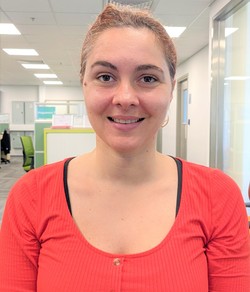Events
Dec 16, 2021
Seminar (2021-12-16)
School of Biomedical Sciences is pleased to invite you to join the following seminar:
Date: Thursday, 16 December 2021
Time: 10:00 am – 11:30 am
Venue: Cheung Kung Hai Lecture Theatre 1, G/F, William M.W. Mong Block, 21 Sassoon Road, Pokfulam, Hong Kong
Speaker: Dr. Melania Barile, Post-Doctoral Fellow, Centre for Translational Stem Cell Biology
Title: “RNA velocity, fate mapping, modelling: Tools to investigate haematopoiesis”
Biography

Dr. Melania Barile was born in Italy, where she also studied Theoretical Physics at the University of Naples. She then moved to Heidelberg, where she obtained her PhD in Biological Science at the German Cancer Research Centre, advised by Prof. Thomas Höfer, with whom she specialised in mathematical modelling for haematopoietic systems. Next, she started a postdoc at the University of Cambridge, at the Haematology department led by Prof. Bertie Gottgens, where she dealt with bioinformatic analysis of adult and embryonic haematopoiesis. Recently, she has joined the group of Prof. Pengtao Liu at CTSCB, where she will extend the previously mentioned techniques to EPSCs and reprogramming.
Abstract
Quantitative analysis combined with data integration is a powerful tool in biological science. Here we illustrate its benefits in several cases for adult as well as developmental haematopoiesis/erythropoiesis. In one case, we integrated a Gata1 chimaera of murine gastrulation with a large reference atlas. By harnessing the idea behind RNA velocity estimation, which combines bioinformatics as well as mathematical modelling, we identified genes that have a burst in kinetics during developmental erythropoiesis, and showed that such genes are likely downstream of Gata1. As an example of integration of different data types, we simultaneously modelled fate mapping and cell cycle data to identify stem cells differentiation kinetics. This approach increased the number of identifiable parameters and reduced their confidence intervals, and becomes even more powerful when combined with single cell lanscapes. Finally, we show an example of how the integration of the same type of data as measured by different laboratories allows selecting among alternative differentiation models.
ALL ARE WELCOME
Should you have any enquiries, please feel free to contact Miss River Wong at 3917 9216.

